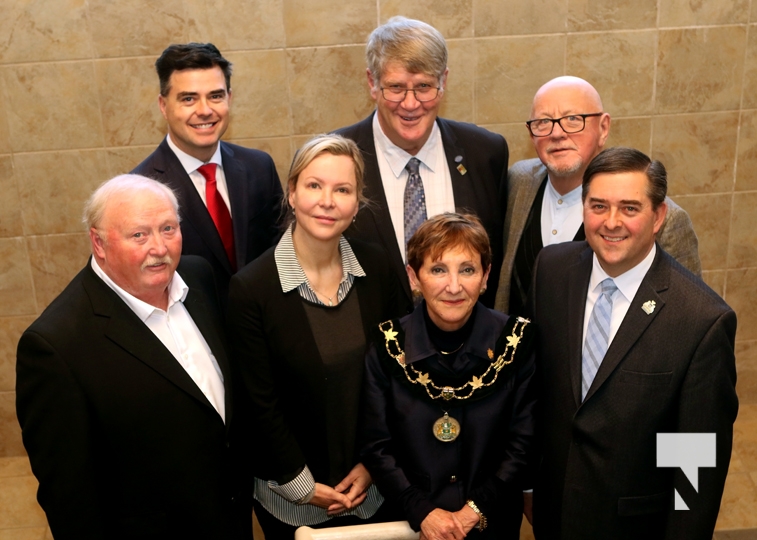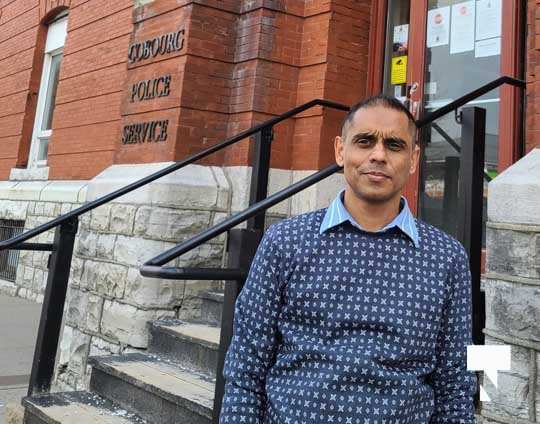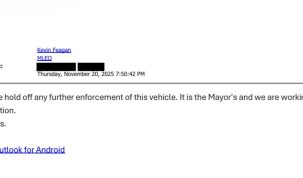By Cecilia Nasmith/Today’s Northumberland
It may not be communicated sufficiently, but Northumberland County councillors agreed at their August meeting that measures toward climate-change adaptation and mitigation are embedded in all their planning and initiatives.
Following a presentation at the Economic Development, Tourism and Planning Committee meeting earlier that month expressing concerns that this issue was not being given sufficient attention, Associate Director of Operations Adam McCue addressed Wednesday’s regular council session with a presentation.
McCue believes the 2023-2027 strategic plan being finalized does address this issue to some extent, with its focus on sustainability and respect for Northumberland’s natural heritage as it strives to build a thriving and prosperous community. But he went a step further with a presentation on specific actions being taken.
Greenhouse Gas Reduction
Northumberland County has adopted Canada’s reduction target of 30% below 2005 levels by 2030 and 80% below 2005 levels by 2050. In support of this goal, they have developed a GHG Emission inventory, are drafting a Climate Action Plan and have received council approval for a permanent Environmental Officer.
That 2005 level, by the way, was 23,900 tonnes of GHG emissions from county operations. By 2020, it has gone down to 19,800 tonnes – down by 17%, or more than halfway to their 2030 goal.
This is in spite of increases in county service levels that have required the addition of a number of facilities – 555 Courthouse Rd., 600 William St., the Ontario Agri-Food Venture Centre in Colborne, the Port Hope Paramedics Base and shared EMC bases in Colborne, Roseneath and Trent Hills – and the expanded fleet of service vehicles for paramedics, roads, facilities, waste, inspection service and natural heritage purposes.
The county has adopted a climate lens through which to view projects for at least 15 years, McCue said, listing such results as LEED standards and green rooves for the new county headquarters and the introduction of the green-bin program that has caused significant reduction in methane generation by diverting more than 3,000 tonnes of food waste from the landfill each year. As well, the new Golden Plough Lodge that will open next year will be significantly more energy efficient than the current facility, and hybrid council and committee meetings and telecommute programs that allow eligible employees to work up to 70% of the time remotely have reduced the carbon footprint.
Waste diversion
With a commitment to 75% residential-waste diversion, the county has progressed from 35% in 2014 to 52% today. McCue credits such relatively new innovations as year-round household hazardous waste and e-waste collection, the new green bin program, seasonal roadside collection of leaf and yard waste, and the development of programs to divert styrofoam, clothing and bulky plastic items.
Road operations
The county is extending the life of roadways with such treatments as micro-surfacing and crack sealing. And when reconstruction is necessary, their cold in-place methods reuse much of the existing asphalt.
Land use planning and nature conservation
The county’s Official Plan encourages green development standards and techniques, and encourages the maintenance of natural features within development proposals. They work to ensure the highest-class prime agricultural soils are protected over the long term. Development is directed away from areas of natural heritage, and they work closely with Conservation Areas to mitigate potential property damage from natural hazards. As well, a more proactive stewardship approach has been adopted for the county forest, with early detection methodologies for invasive pests and prescribed burns to reduce the chance of catastrophic wildfires.
Emergency planning
Regular municipal emergency exercises are focus on natural disasters and inclement weather. And after such actual events, strenuous after-action review and planning take place to improve future responses.
Looking ahead, a Climate Action Plan is being developed with steps that address both mitigation efforts and adaptation measures to cope with impacts that have already occurred (and will occur) as a result of climate change.
A number of recommendations are being put forward, such as Feasibility Assessment and Implementation Plans to electrify county vehicles and capture methane from the Brighton landfill.
Discussions will be facilitated with stakeholders from the agricultural on reducing GHG emissions. Future reports to council will includes discussions on any impacts a recommendation may have on climate change, and council will receive an annual report on progress toward meeting GHG emission reduction targets.
At the end of McCue’s presentation, he recommended one updated strategic direction for Pillar 4 (Proper Sustainable Growth) of the Community Strategic Plan: “We balance the benefits of development and intensification with preservation of our rural heritage, and lead in environmental stewardship, building complete communities that are resilient to climate change and create a high quality of life for all residents.”
Councillors were uniformly enthusiastic not only about the report, but about county’s operations. Warden Mandy Martin singled out their recent tour of the Brighton landfill, terming it “exemplary.
“The changes that have taken place there are worthy of tours and visits and opening up to anybody involved with the environment – the land covers, the reduction in exposure of items, the sorting.
It’s quite impressive, and it’s led by very environmentally passionate people. It just makes you excited – who knew you could get so excited, because it’s working and it’s effective and it’s beautiful.”
As for the bigger picture, Martin continued, “I can tell you that the staff here and this council – we have been involved, and we are paying attention, and it isn’t just a one-off.
“This is stuff that’s actually happening, and I salute you,” she said to the staffers present.
“This is really a step publicly that needs to be known, just how much is going on behind the scenes.”
Which brought up the point of how this should all be communicated, which everyone agreed is a key component.
“We are doing things to mitigate climate change, but we don’t advertise it enough so the residents don’t know what we are doing and consequently they think we are doing nothing,” Councillor Bob Crate lamented.




















